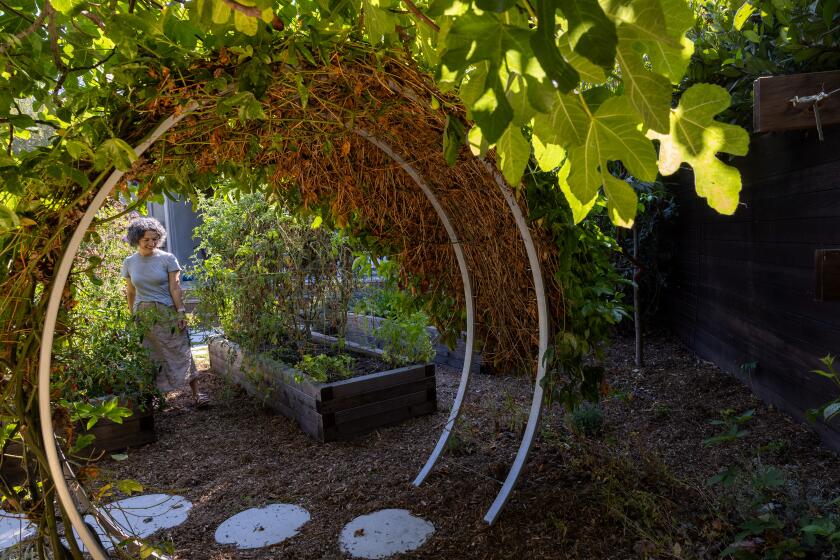CALIFORNIA DODDER
California dodder is a parasite that ensnares its host plant with a tangled web of long yellowish stems. Six species are plentiful in Southern California.
Sometimes dodder entirely enwraps shrubs and plants such as laurel sumac, deerweed, sage (as pictured here) buckwheat, goldenbush, ceanothus, cocklebur and pickleweed.
Dodder can be seen year-round but is most visible in spring and summer, when on mountainsides below 5,000 feet it appears as large, snarled, cobwebbed patches of pale mustard yellow or orange. The patches are brown when dead. The sticky seeds germinate on the host, adhering with suckers.
The power of the parasite can best be witnessed when a breeze springs up: Nearby plants wave to-and-fro, their blossoms dancing, but a host plant to dodder is utterly still, reduced to a helpless giant by thousands of slender tendrils. Dodder has leaves that are minute scales, virtually invisible to the naked eye. The flowers, which usually occur in the spring, are very tiny, waxy white and bell-shaped, with a five-part corolla and five minute white sepals.
A member of the morning glory family, dodder is also known as golden thread, devil’s hair, witch hair, strangle-weed and (by the disappointed in life?) love-vine.
Its Latin name is Cuscuta californica.
More to Read
Sign up for The Wild
We’ll help you find the best places to hike, bike and run, as well as the perfect silent spots for meditation and yoga.
You may occasionally receive promotional content from the Los Angeles Times.






